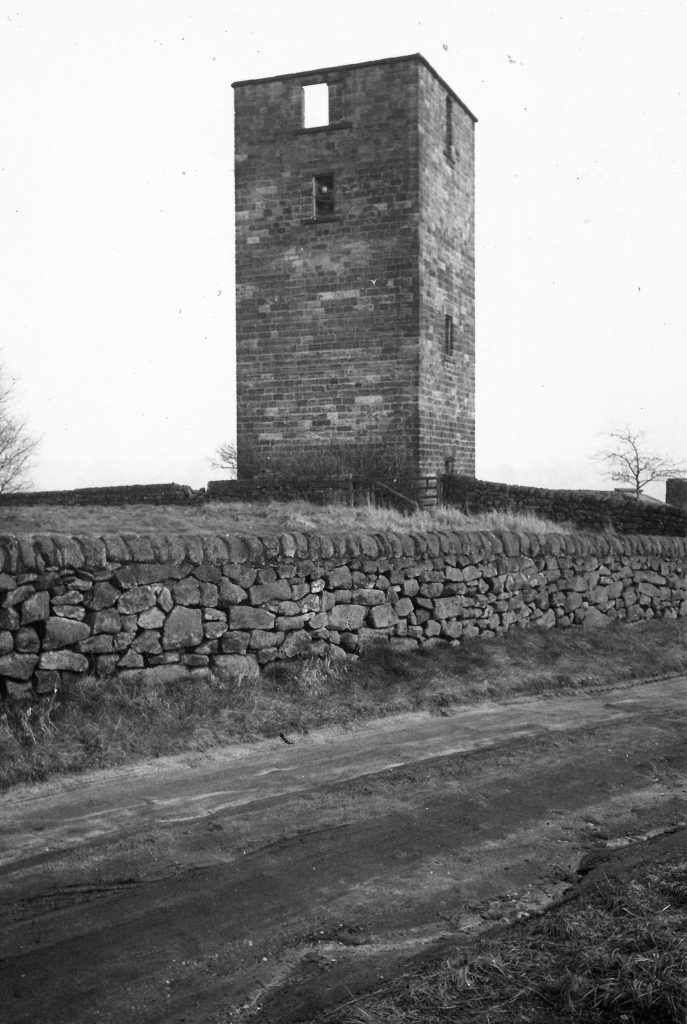M10

This is part of a heritage trail around Milford, taking in some of the key historic areas. You can find a map of the trail, and information on where to find interpretation boards containing more details on the town and its history at www.derwentvalleymills.org/milford.
The Tower
The Tower was built c.1839 by the North Midland Railway Company, at the time of driving Milford tunnel through this hillside. A number of theories have been written as to its use, including as a sighting tower to survey the line, or as a semaphore tower to signal to trains that the line was clear.
A new study, by railway engineer and industrial historian Ian Castledine based on the extant archaeological evidence, suggests the tower was built to house a vertical steam winding engine for raising waste material from nearby shafts during construction of the tunnel in order to hasten its construction. One such shaft now used for ventilation can be found immediately south of the tower on the golf course.
The line’s engineers were George and Robert Stephenson, assisted by Frederick Swanwick. Vertical winding engine houses of this type were not unusual in the coalfields of the North East, so it is likely this technology would have been familiar to the Stephensons.
Ian Castledine delivered a paper on this subject to the Second International Early Engines Conference held at the Black Country Living Museum, Dudley in October 2021. It can be read here. Courtesy of the International Early Engine Conference, copyright of Ian Castledine and the IEEC, for personal use only.
The Chevin
From the Tower, the footpath, part of a Roman Road, takes you up on to the Chevin, the first significant hill in what becomes the Pennines as you head north. Its name is believed to come from the Celtic word Cefn, meaning ridge, which hints at how ancient this ridge route really is.

